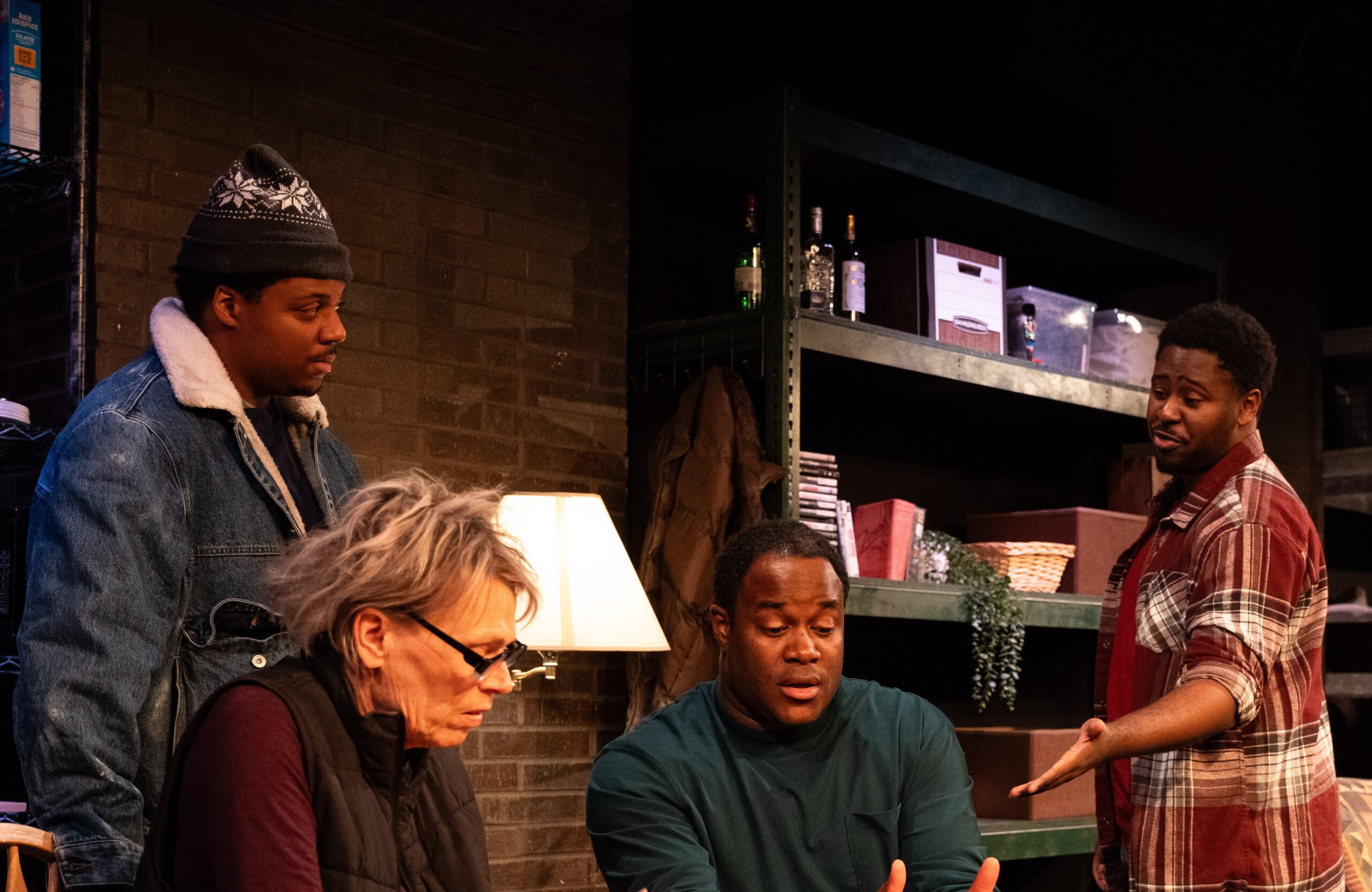A captivating, imaginative audio-visual production of movement and heightened sensory perceptions that leaves me inspired, exhilarated… and wanting more. I can’t wait to see what Theatre Gargantua has planned next.
Don’t expect to get every single moment in Theatre Gargantua’s Dissonant Species now on stage at Toronto’s Factory Theatre. And that’s okay.
Brimming with heightened sensory perceptions that leave one breathless, inspired, exhilarated, and indeed exhausted, the one-hour movement piece captivates and mesmerizes. It keeps me waiting and eager to see what Gargantua has planned next.
Personally, that’s good theatre when audiences become challenged by on-stage work.
Laird Macdonald’s subtle lighting designs during the preshow subtly highlight Michael Gordon Spence’s eye-catching set design. The stage remains uncluttered. A variety of musical instruments on stage, right and left, are reminders of the rich array of sounds and vibrations they produce when played. Upstage centre on the back wall, some spindles twist around a horizontal axis. Watching those spindles twist and turn in sync with the instruments’ and songs’ sounds becomes hypnotic. Richard Lam’s work in sound design and musical direction, along with Christopher-Elizabeth’s experimentation with sound, becomes a vibrant and essential part of the production.
Heather Marie Annis and Michael Gordon’s Spence’s story about a music teacher (Spence) who is aggressively bumped on the shoulder while walking on the street becomes unsettling for the man. It’s not the act of bumping itself that’s unsettling; instead, that aggressive bump awakens a violence within the teacher that he didn’t know existed. Along with this ‘assault’ on the teacher, students and a colleague also experience their own bumps and disruptions, which become disturbing to them and their lives.
Dissonant Species explores sound experiments and reflects Einstein’s idea that everything in the universe is vibration and thus sound. The production becomes a symphony of human discord that surrounds us. By the end, the audience is invited to consider whether we can find harmony within this dissonance. This is where I return to the idea that it’s okay not to grasp every moment. Science, Biology, Chemistry, and Physics never particularly interested me during high school or my undergraduate years.
What becomes truly compelling to watch is the physicality of the entire ensemble: Heather Marie Annis, Nicholas Eddie, Malia Rogers, Michael Gordon-Spence, and HannaH Sunley-Paisley. They work in perfect harmony with the music, design, and text, which are elegant and restrained at one moment and openly expressive the next. With Jacquie Thomas’s clear direction in understanding both the text and subtext, the performers’ physicality becomes breathtaking. There are several moments where my jaw dropped, wondering how the performers move from one point to the next with incredible grace, style, and finesse. The actors possess a deep understanding of their bodies and how to move in unison, maintaining purposeful and deliberate movement. They also know when to hold their silence in tableaux for visual dramatic impact.
During an interview I had with Thomas before the show, she mentioned that sometimes we, as humans, need to lean into the dissonance to find the harmony. After I finished the interview, I thought more about that statement and wondered what she truly meant.
It all comes clear in the show.
I sat forward in my chair once the ensemble was invited to scream. When all five on that stage are screaming, a transformation from voices to pure melodic tones becomes alluring to the ear. The emanating sounds are released from vocal cords that have been long held in tension, stress, and fatigue. These sounds become fascinating as they soar to the roof of Factory Theatre and reach the back wall of the upper level, where the reverberation can be heard. Magic, complete and absolute magic, along with goosepimples.
After seeing Dissonant Species, I can’t help but recall another question from my interview with Thomas: what advice she would give to aspiring artists. She says:
“See as much work as possible and figure out what of that work inspires you, aligns with your aesthetics and moves you. After that, make it your mission to create work with those artists and companies.”
The same applies to good theatre. Theatre that continually challenges audiences to think, re-think, ponder, reflect…and do it all again. To perform that quality of challenging good theatre will always cost something from its performers and audiences.
But it’s worth it when it occurs.
Please go and see Dissonant Species. The cost of good theatre might be more questions, more thinking, more excitement and more exhaustion.
But it’s worth it.
Running time: approximately one hour with no interval/intermission
Dissonant Species runs until November 23 at Toronto’s Factory Theatre, 125 Bathurst Street. For tickets: factorytheatre.ca or call (416) 504-9971. To learn more about Garganthua Theatre: theatregargantua.ca
THEATRE GARGANTUA presents
Dissonant Species by Heather Marie Annis and Michael Gordon Spence
Directed by Jacquie P.A. Thomas
Set Design: Michael Gordon Spence
Lighting and Projection Design: Laird Macdonald
Sound Design and original compositions: Christopher-Elizabeth and Richard with additional original compositions by The Ensemble and Heidi Chan
Music Direction: Richard Lam
Sound Experiments: Christopher-Elizabeth
Performers: Heather Marie Annis, Nicholas Eddie, Malia Rogers, Michael Gordon Spence HannaH Sunley-Paisley
















